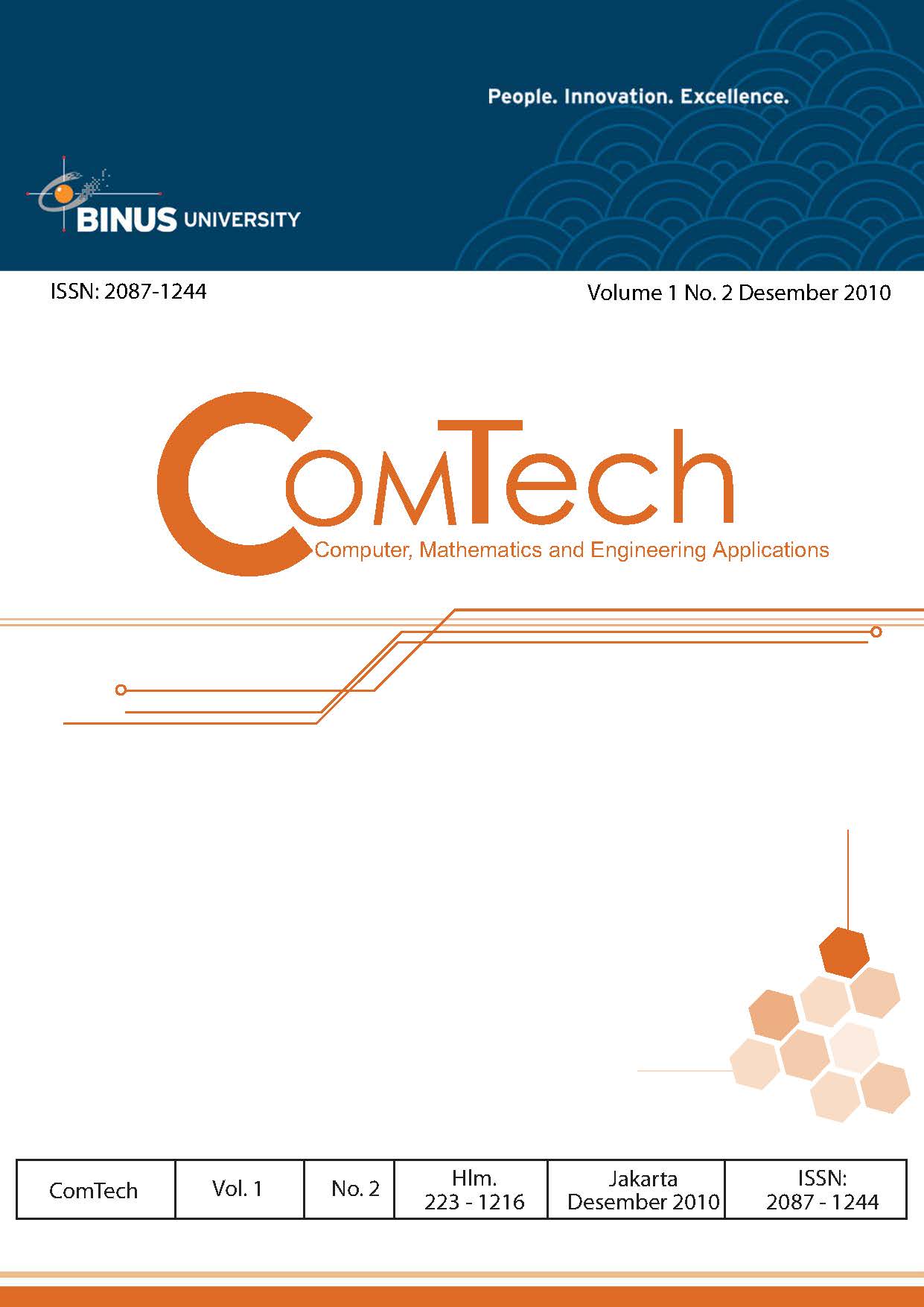Perancangan E-Learning Dengan Pendekatan Addie Model (Kasus : Mata Pelajaran Bahasa Inggris – SD Ipeka Tomang)
DOI:
https://doi.org/10.21512/comtech.v1i2.2354Keywords:
e-learning, ADDIE modelAbstract
Problem faced by SD IPEKA Tomang is not reaching its predicted target in English subject. This is caused by less understanding among students in important parts of English which reflected in making sentences or writing essays. Teachers have difficulty in explaining about grammar usage to students, which is the basic knowledge in making sentences. In order to avoid this problem, SD IPEKA Tomang is adding or replacing the teaching media into a computer media. In doing this analysis and designing of e-learning is using ADDIE Model approach. This research is done through stages of analysis, design, and development. Analysis stage uses Gap Analysis approach to understand the needs of e-learning.References
Clark, R. C., & Mayer, R. E. (2003). E-learning and the Science of Instruction. San Francisco: Pfeiffer.
Effendi, E., & Zhuang, H. (2005). E-learning: Konsep dan Aplikasi (1st ed.). Yogyakarta: C.V. Andi Offset.
Elliot, S. N., Kratochwill, T. R., Littlefield, J., & Travers, J. F. (1999). Educational Psychology: Effective Teaching, Effective Learning (2nd ed.). Madison: Brown and Benchmark.
Gagne, R. M., Wager, W. M., Golas, K. C., & Keller, J. M. (2005). Principles of Instructional Design (5th ed.). Belmont, Canada: Thomson Wadworth.
Piskurich, G. M. (2003). The AMA Handbook of E-Learning: Effective Design, Implementation, and Technology Solutions. New York: AMACOM.
Downloads
Published
How to Cite
Issue
Section
License
Authors who publish with this journal agree to the following terms:
a. Authors retain copyright and grant the journal right of first publication with the work simultaneously licensed under a Creative Commons Attribution License - Share Alike that allows others to share the work with an acknowledgment of the work's authorship and initial publication in this journal.
b. Authors are able to enter into separate, additional contractual arrangements for the non-exclusive distribution of the journal's published version of the work (e.g., post it to an institutional repository or publish it in a book), with an acknowledgment of its initial publication in this journal.
c. Authors are permitted and encouraged to post their work online (e.g., in institutional repositories or on their website) prior to and during the submission process, as it can lead to productive exchanges, as well as earlier and greater citation of published work.
 USER RIGHTS
 All articles published Open Access will be immediately and permanently free for everyone to read and download. We are continuously working with our author communities to select the best choice of license options, currently being defined for this journal as follows:




















